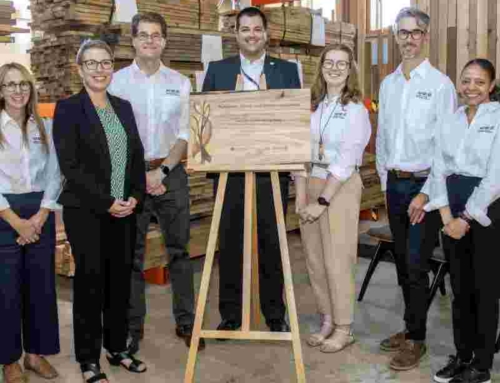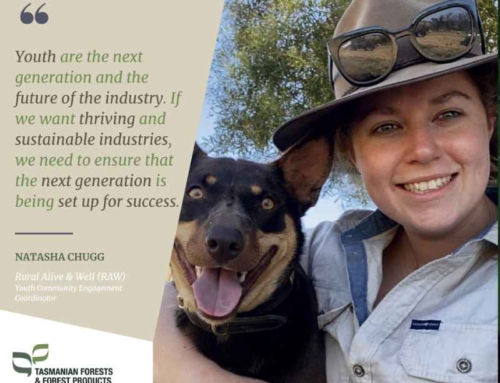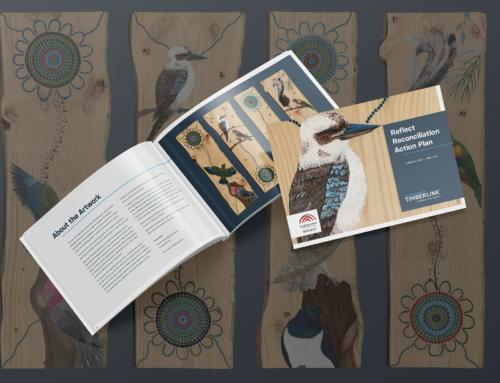A lifetime of industry research: Dr Libby Pinkard, CSIRO
Dr Libby Pinkard has grown up studying, researching and living within the realm of the Tasmanian forest industry.
Now, she is leading the CSIRO ‘Unlocking Financial Innovation’ in Forest Products project.
Libby’s role is Group Leader in CSIRO Land & Water’s Living Landscapes Program (Natural Capital). Her current work is largely based around natural capital management, assessment and accounting.
“I work as part of a team looking at the practical application of the Natural Capital Protocol at an enterprise scale, across the forestry, fisheries and cotton sectors,” she said.
“We are also leading the ‘Unlocking Financial Innovation’ in Forest Products with Natural Capital project.”
The key objective of the project is to unlock investment in the non-timber natural capital value of Australian forest resources.
“We do this by developing tools and methods for forest growers and investors to cost-effectively assess, monitor and manage natural capital risks and opportunities,” Libby said.
“Staff in my group are also heavily involved in supporting the Australian Government’s carbon accounting methodologies, quantifying co-benefits from agroforestry, and in developing tools and approaches for quantifying biodiversity values in the landscape.”
Libby moved to the Australian Capital Territory to study forest ecology and management at the Australian National University in Canberra after growing up in Tasmania.
“I have always had a strong interest in environmentally sustainable land and forest management,” she said.
“Growing up in northern Tasmania during the 1970’s and 1980’s, it was hard for me to avoid the environmental conflict that occurred.
“The conflict helped my understanding of the value of environmental, social and economic sustainability in Tasmania and how forest management can play a key role in this.
“I jumped at the opportunity to study and then work as a researcher in this sector.”
Libby worked with Forestry Commission of Tasmania as a leader on a project researching tree decline in the Midlands. Her work with Forestry Commission was largely based on a direct seeding approach to revegetation.
In 1990, Libby started her PhD with the with the Cooperative Research Centre for Temperate Hardwood Forestry.
“My PhD focused on developing pruning regimes for solid wood production from eucalypt plantations,” she said.
“We took a mechanistic approach and focused on understanding the levels of leaf loss. Leaf loss was likely to reduce growth and dominance in a stand.”
Libby and her team set up scaffolding around pruned and unpruned trees, and used the scaffolding to abseil down the tree, measuring photosynthesis, leaf and branch development and water relations.
The data were then used in models of tree and forest growth, and to develop pruning prescriptions based on the relationship between amount of crown removed and tree growth.
This foundation put Libby in good stead for subsequent work on the impacts of leaf loss from pests/diseases on plantation productivity, which she did as part of two subsequent forestry CRCs.
In her career, Libby has also spent a lot of time examining our environment on a larger scale.
“I have also led projects examining climate change risks, impacts and adaption options for our plantation forestry sector,” she said.
“I was heavily involved in CSIRO’s contribution to a SIEF-funded project examining CO2 responsiveness of eucalypts, where the objective was to pick the winners and losers in a high CO2 world.”
Libby has reflected on the Tasmanian forest industry today, noting significant changes throughout her life.
“I am appreciative of the long history of research in Tasmania into the impacts of native forest harvesting on biodiversity, water and soils, and more recently on growing eucalypts in plantations.,” she said.
“This provides important data to support activities such as natural capital accounting.”
Libby said that seeing the recent examples of the industry banding together to achieve a common goal is great.
“I think that there is good opportunity for the forest industry to work together to promote its environmental credentials,” she said.
















